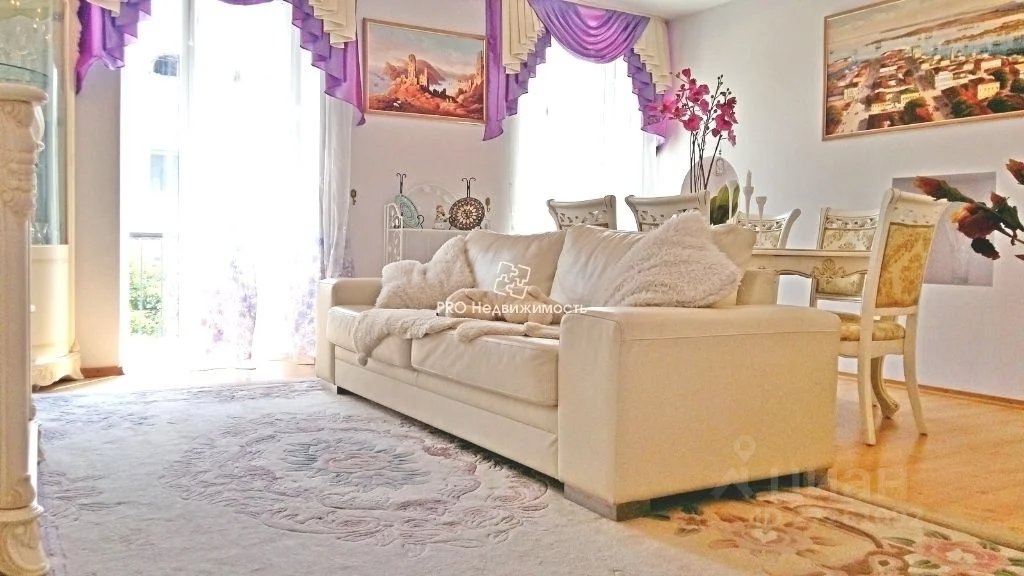A two-bedroom flat in the centre of Sevastopol, Crimea: 60 square metres, renovated and furnished. It was put up for sale in June, and it’s still available now: in the meantime, the price dropped by a whopping 3.6 million rubles (€47,000), or a quarter of its initial price.

Photo: CIAN real estate marketplace
This is not a one-off case. Right now, there is a real estate sale boom in Russia-occupied Sevastopol and Crimea. Up to 2–2.5 times more properties are uploaded for sale now than before the war, in January 2022, the Mir Kvartir real estate agency estimates. The number of flats offered for sale started rising at the end of the summer season, in September. By November and December, they were sold at a discount price.
Due to the shutdown of air traffic and the ongoing war, the tourist flow in Crimea halved last summer. It is unclear when it might go back to the previous level or whether it will recover at all. As of right now, investors are trying to withdraw money from Crimea.
At the same time, the number of people willing to relocate to the peninsula is down, too. Over the past few years, the bulk of property buyers in Crimea have been from Moscow, St. Petersburg, and a number of regions in Ural and Siberia. They are now afraid of investing in resort property and of relocating to Crimea, real estate agents point out.
The number of mortgages arranged in January–November dropped by 44%. This is more than the average in Russia (–33%), the data provided by the Bank of Russia suggests.
Due to the growing supply and the low demand, property prices in Crimea are going down, although they were on the rise back in early 2022. Only in October–December 2022, the price of a square metre of property dropped by 3.5% in Sevastopol and by 1.3% in Simferopol. Sellers are ready to drive down prices to strike a deal, offering multi-million discounts.
A similar situation has been recorded in Russian border regions. In the Belgorod region, 1.5 times more flats went up for sale this January than a year ago: nearly 35,000. The first spike in property ads took place in May, right after the shelling of the region’s border villages started. By July, missiles were already reaching the centre of Belgorod.
The second atypical spike in property offered for sale began in November, although usually, sellers tend not to be as active as the year draws to a close. As a result, in January 2023, the market has reached a record level over the past two years.
Local residents consider moving to a safer region, but it is not that easy: no one wants to buy property in a city that is under shelling, they told Novaya-Europe. Property prices in the Belgorod region have been falling since June.
In the Bryansk and Kursk regions, the rise is not as noticeable. This could be related to the fact that these regions are farther away from the frontline and that they come under fire less often than the Belgorod region.
Nevertheless, in the Bryansk region, the number of flats offered for sale started rising since June, reaching 11,700 in January 2023.
In January 2022, there were only 7,300 flats offered for sale on the market. In the Kursk region, housing supply rose by 13%.
“The rise in supply can be explained by the desire of property owners to move away from the combat zone. Due to the growing supply, the prices in border regions first plateaued, and then started dropping in the last quarter of 2022. So far, we do not see the conditions for this trend to change,” Pavel Lutsenko, CEO of real estate agency Mir Kvartir, says.
Empty cities
In Russia’s major cities, the mass sale of property began back in May 2022. According to Sberbank, by November, the highest number of flats in the past four years went up for sale in Moscow and the Moscow region.
St. Petersburg and the St. Petersburg region also beat the four-year record last year, with the peak of sales recorded in August and September.
According to Mir Kvartir, there were 152,900 flats offered in Moscow at the peak of sales. This number is 1.5 times higher than it was before the war, in January 2022. In St. Peterburg, the record supply reached 89,700 flats, which is a third, or 34%, higher than the pre-war level.
However, there are not that many buyers: the number of mortgage deals in Russia’s major cities has fallen by 35-39% compared to last year. Meanwhile, property prices in Moscow have been falling since May. Back then, a square metre of resale property cost 282,000 rubles (€3,700) on average. In December, the price dropped by 10%, reaching 253,000 rubles (€3,300) per square metre.
In St. Petersburg, the prices reached their peak in June. Since then, they fell by nearly 6%, from 181,000 rubles (€2,370) to 170,000 rubles (€2,230) per square metre.
“In March and April of last year, due to the sharp increase of the key interest rate and the exchange rate, a short-term increase in property demand was recorded in the capitals [Moscow and St. Petersburg], which is why the number of listings on the market had decreased somewhat. But then it started growing almost continuously: people were leaving the country and putting their property up for sale,” Pavel Lutsenko explains.
Join us in rebuilding Novaya Gazeta Europe
The Russian government has banned independent media. We were forced to leave our country in order to keep doing our job, telling our readers about what is going on Russia, Ukraine and Europe.
We will continue fighting against warfare and dictatorship. We believe that freedom of speech is the most efficient antidote against tyranny. Support us financially to help us fight for peace and freedom.
By clicking the Support button, you agree to the processing of your personal data.
To cancel a regular donation, please write to [email protected]
